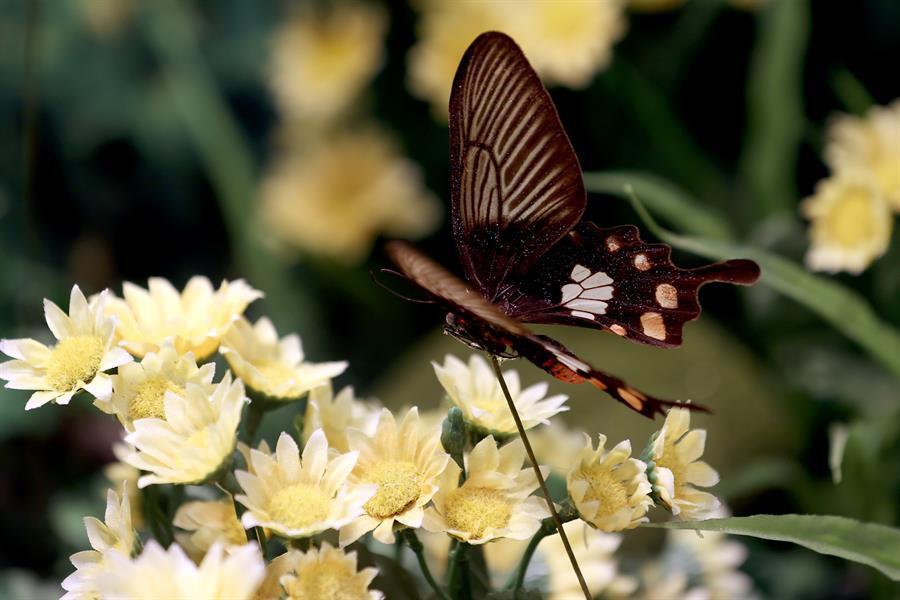
Elegant butterflies, which are fed with fruits left by the officials, create colorful images in the Tropical Butterfly Garden, operated by the Selçuklu Municipality in the Central Anatolian province of Konya.
The garden is one of the largest of its kind in Europe in terms of its butterfly flight area.
In addition to its special nutrition system, light, heat and humidity environment, the conditions created with approximately 20,000 plants of 106 species offer a natural habitat for butterflies from tropical countries.
The butterflies in the garden are fed with seasonal fruit cocktails such as watermelon, peach and cherry during the summer period.
Butterflies feed on tubes under their heads, which look like a spiral when closed and resembling a proboscis when opened.
After controlling the food with their sense of taste in their feet, butterflies absorb the liquids of the fruits through these tubes.
The garden is not only a frequent destination for local and foreign tourists in the city but is also a center of attraction for photographers as these butterflies create very nice images while consuming their fruits.
Contrary to popular belief, some butterflies can live for one to two months while some for several seasons.
In the tropical garden, which has an area of 7,600 square meters, including a 3,500 square meter visitors’ area in the central Selçuklu district, visitors witness the colorful world of thousands of butterflies.
From Philippines, Kenya and Costa Rica
Speaking to the state-run Anadolu Agency, Duygu Taştan, a biology specialist at the Konya Tropical Butterfly Garden, said that the garden, where tropical butterflies live, was one of the largest butterfly gardens in Europe with an area of 1,600 square meters.
Stating that there are about 60 different species in the garden, Taştan said that the butterflies come from the Philippines, Kenya and Costa Rica.
Taştan said that special conditions were created for butterflies of tropical regions to live in Konya, which has a harsh continental climate.
“In the garden, the climate is suitable for these butterflies like in their homeland. In summer and winter, 80 percent humidity and temperature close to 30 degrees are provided here. These opportunities offer butterflies their natural habitat,” she said.
“Visitors can also see the pupa period of the butterflies, during which their wings develop. After they have wings, they start to fly and feed in the garden. The main food source for some butterflies is fresh water and nectar inside the flowers. Also, there are butterflies that like fruit juice. You can see fruit plates left for butterflies in the garden. We feed them with summer fruits in summer and winter fruits in winter. So, our butterflies eat fruits in both summer and winter seasons,” she added.
Stating that the garden was opened in 2015, Taştan said that the interest of visitors is increasing day by day.
“Here, we created an environment that attracts the attention of private tour groups, photographers and tourists from Turkey and abroad. We were not able to host visitors during the pandemic, but visitors started coming with the start of the normalization process. Since its opening in 2015, we have hosted nearly 2 million guests. We host an average of 400,000 to 500,000 visitors annually,” Taştan said.